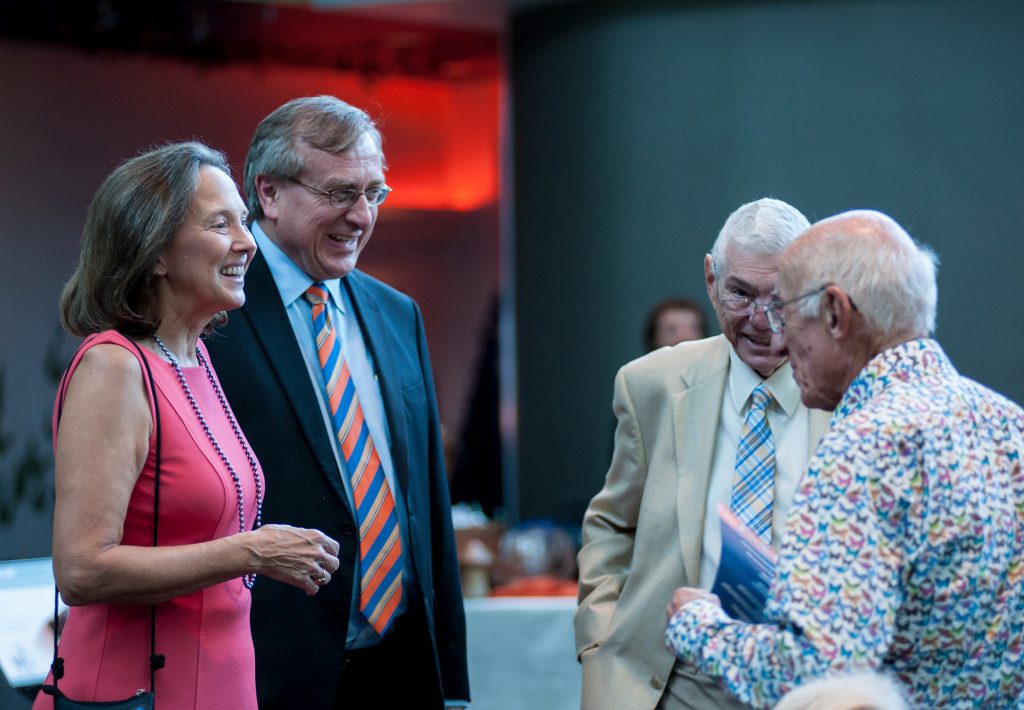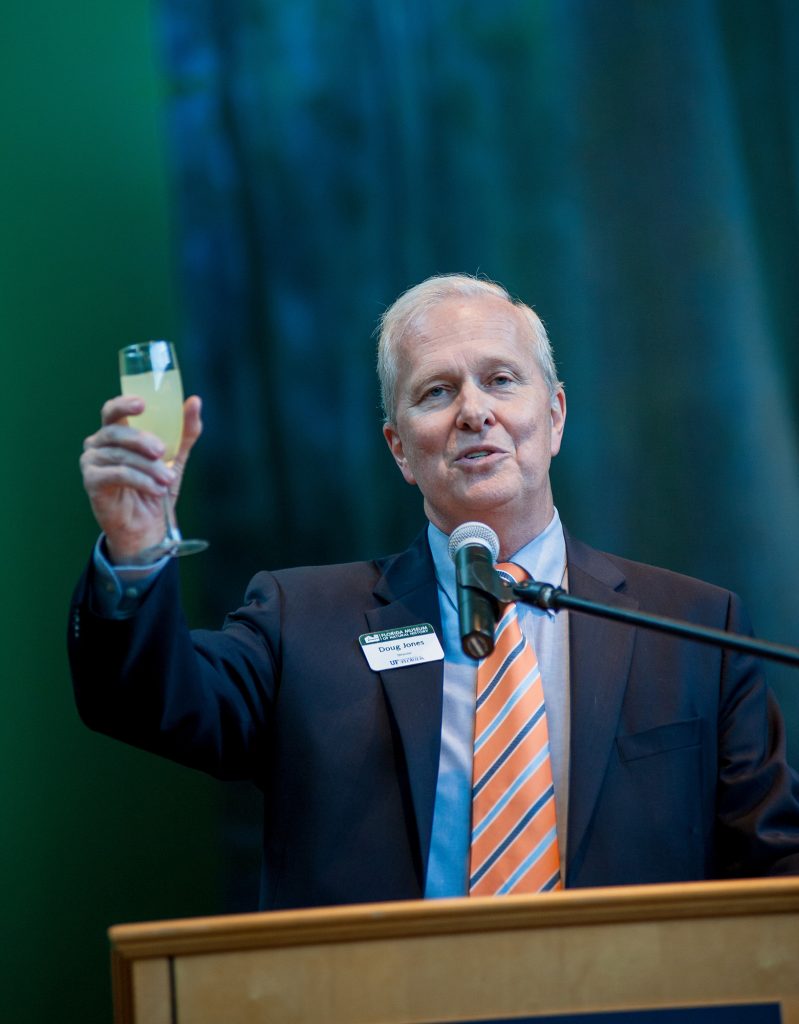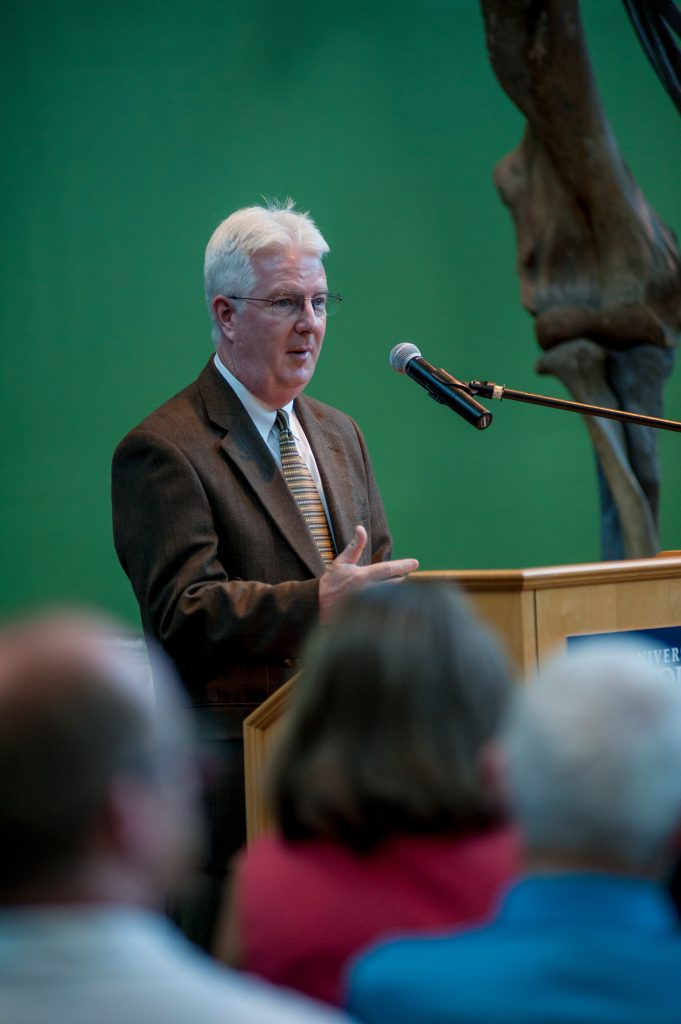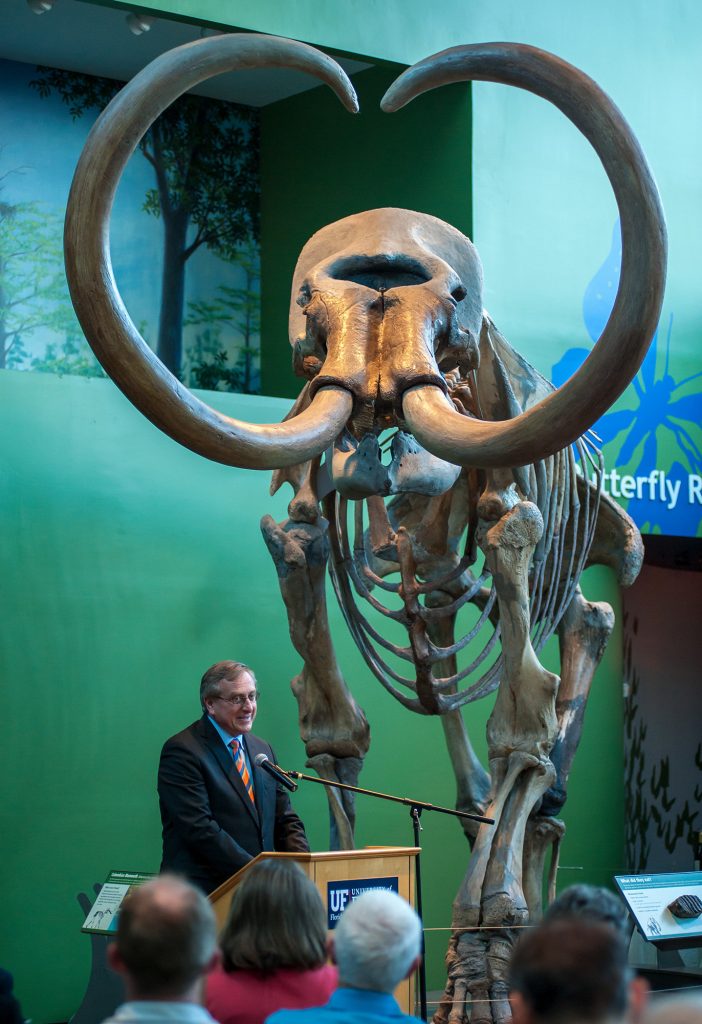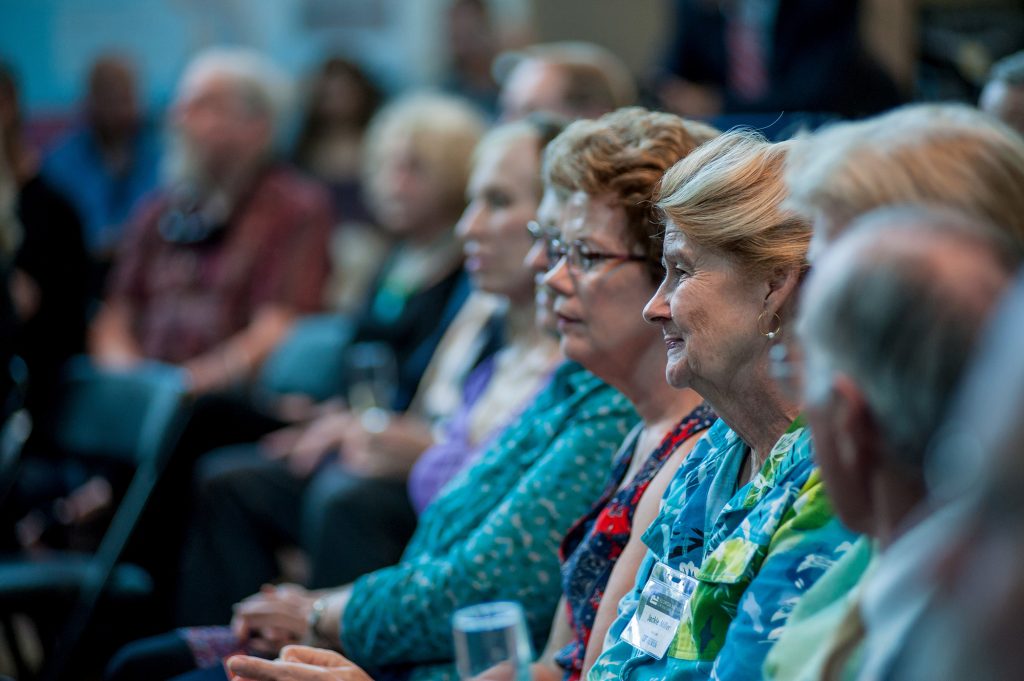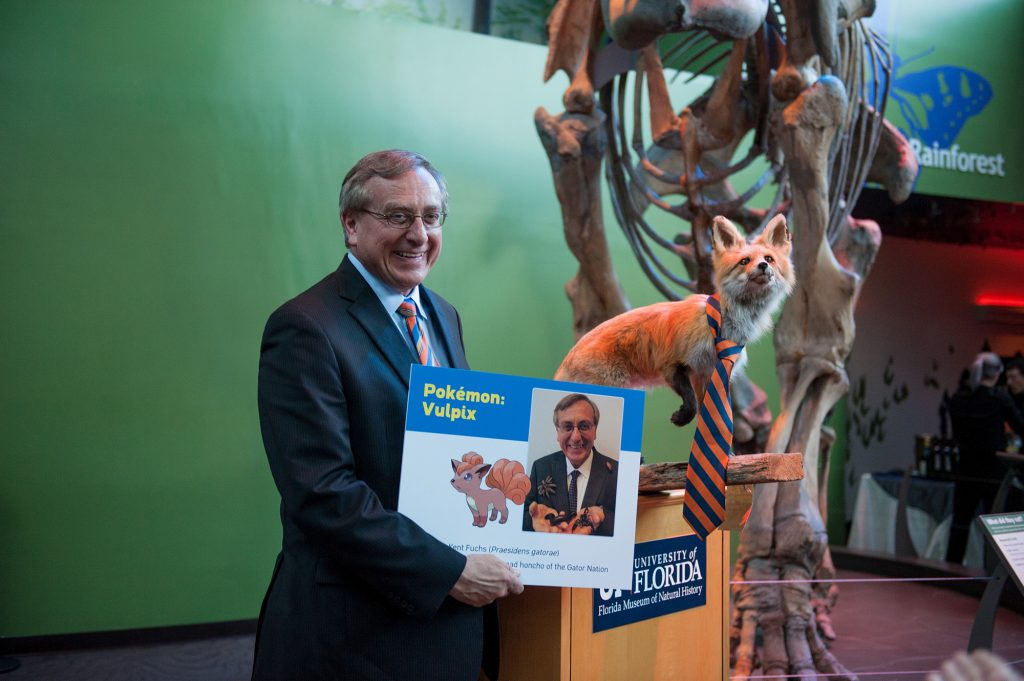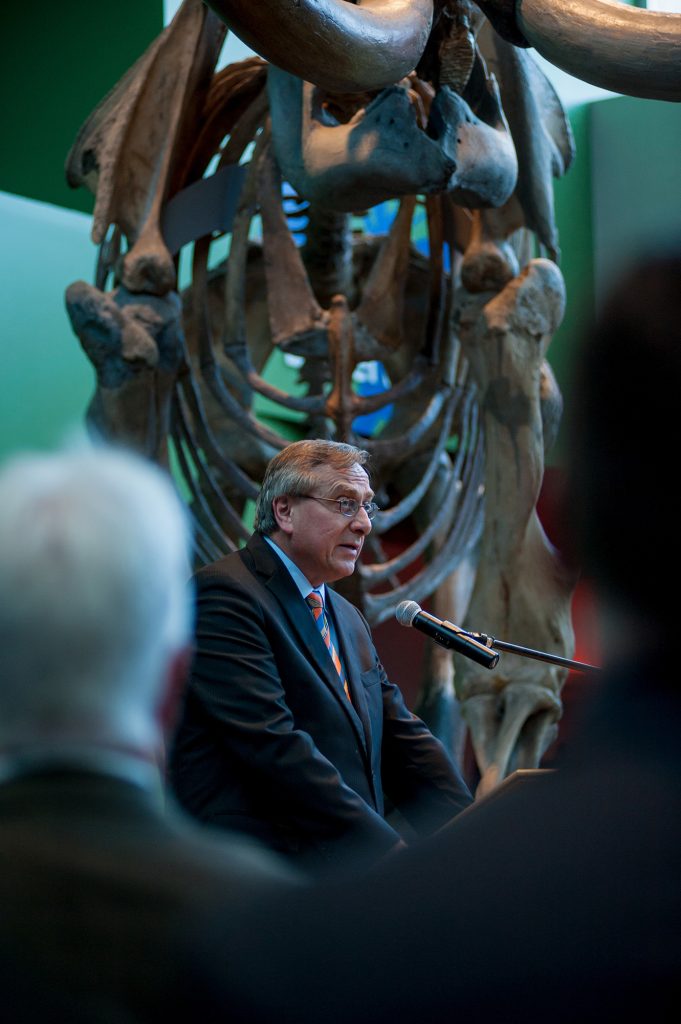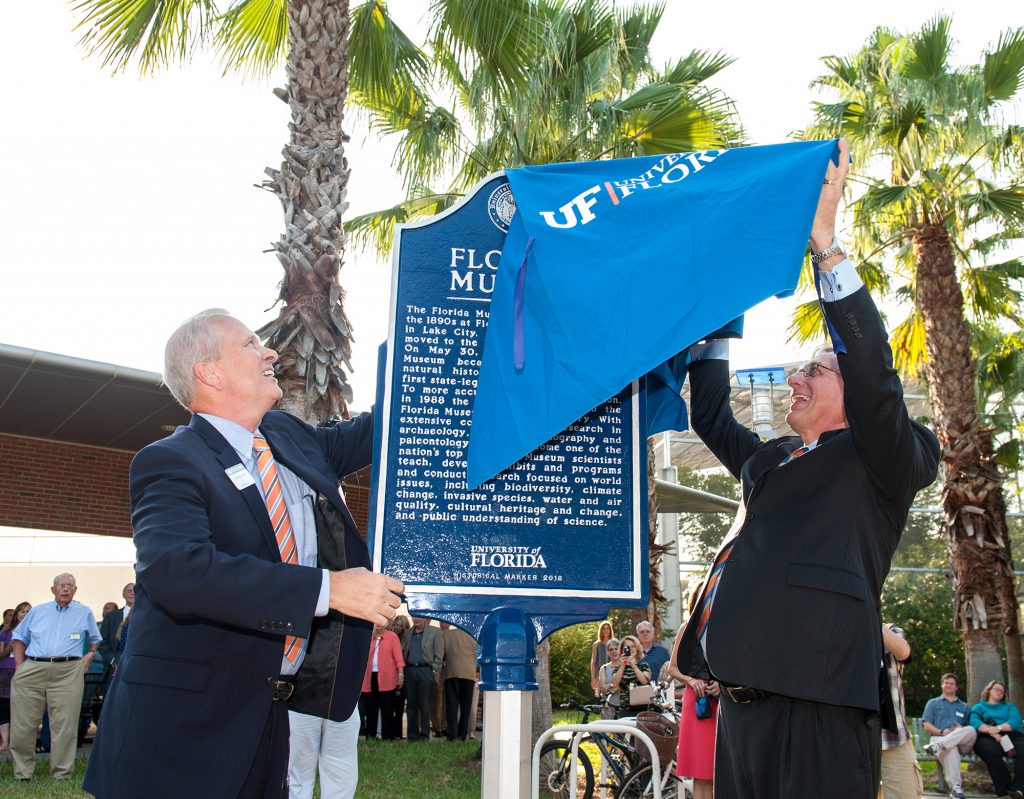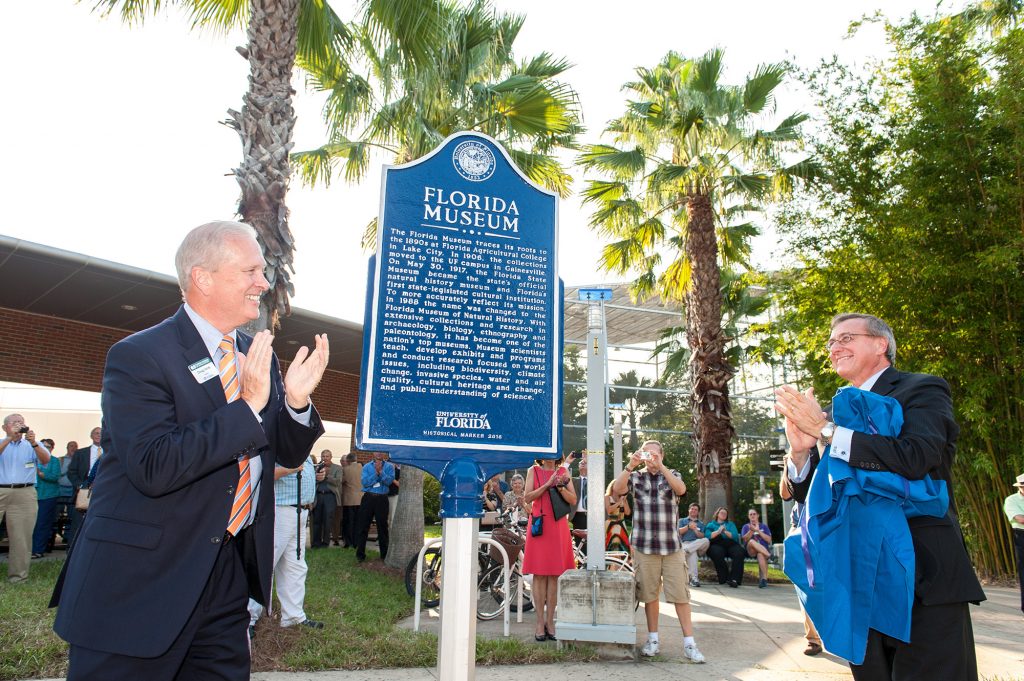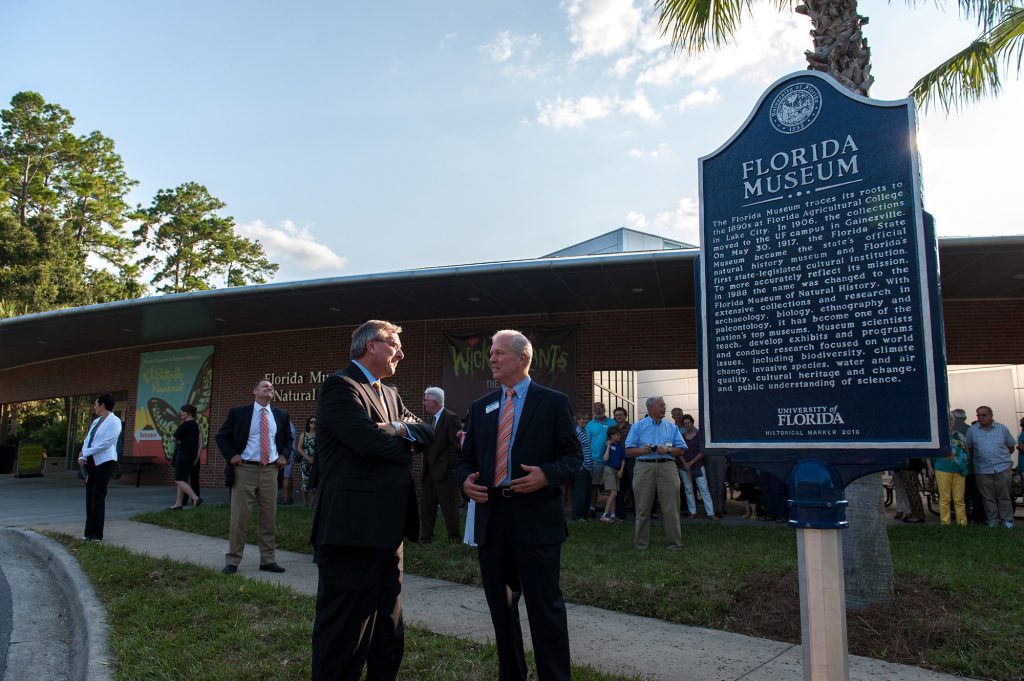On Tuesday, September 6th, University of Florida President Kent Fuchs joined Florida Museum Director Doug Jones in unveiling the centennial historical marker in front of the Museum. This marker commemorates the one hundred year anniversary of the day the state designated this the Florida State Museum, later to be known as the Florida Museum of Natural History.
The event was attended by respected University members, museum board members and supports, and staff and friends of the museum. Doug Jones, Joe Kays, and Kent Fuchs addressed the gathering before going outside to officially unveil the marker. Below is the transcript of President Fuchs’ speech.
Florida Museum photos by Kristen Grace
President Kent Fuchs
Remarks at Historical Marker Dedication
Sept 6, 2016
Joe Kays, director of research communications and chair of the History Council, introduces Kent Fuchs. (The podium is adjacent to the mammoth).
Thank you, Joe! I always feel pride when I come across the handsome historical markers on campus. I’m delighted to join you in hailing a new one. What a perfect start to the museum’s centennial celebration!
Plus, I get to pose with a mammoth. If my speech gets too long, just visualize it goring me with those awesome tusks!
As Doug mentioned, the museum’s collections originated at the Florida Agricultural College in Lake City. In the summer of 1906, laborers packed up all the college’s belongings … books, furniture, scientific instruments and even its dishes! … in preparation for the move to Gainesville.
On the appointed day they loaded the crates and boxes onto horse-drawn wagons and set off. Residents of Lake City, understandably furious about losing the college to Gainesville, gathered in angry crowds along the roadside. A burly professor took the reins of the lead wagon, carrying a rifle across his knees to deter any chicanery.
Much of the museum’s collection at that early stage consisted of delicately preserved native plant specimens, such as sabal palms, which had been collected in the 1800s. Those 1,451 specimens survived the 50-mile journey, and they remain in the museum’s Herbarium Collection to this day.
As we reflect on the museum’s history, I love to think of scholars and students continuing to examine and to learn from this founding collection of 19th-century flora … plucked from forests or marshes in a wild, nearly empty Florida … studied by some of the state’s first professors and college students … packed into wooden crates … loaded onto horse-drawn wagons … and hauled over a rutted dirt road to a fledgling University of Florida.
The museum reopened in Gainesville, and in 1917 the state designated it the Florida State Museum. The general statute specified that it, quote … “collect specimens and data of a civic nature pertaining to the early history of the state” … and … “maintain a depository and exhibitions of the collections and a library of publications free and open to the public.”
The museum has fulfilled that charter to the public with both intelligence and imagination.
I think of the generations of children who have sworn themselves to careers as paleontologists after observing the giant sloth and other preposterous creatures of the past in the Florida Fossils exhibit. I know that many of those children and their families join in the local tradition of searching the sands of Hogtown Creek for shark’s teeth. After visiting the museum’s Shark Teeth Row, I’m sure they all pine for that greatest of finds: a Megalodon tooth, wilder and fiercer than a dagger.
It is here at this museum that many Floridians make their first acquaintance with the state’s Calusa heritage … discover a Mangrove forest … or explore their first Florida cavern. And few visitors will ever forget rediscovering butterflies, and possibly also their sense of wonder, in the Butterfly Rainforest.
The museum has grown and evolved not only as a cultural beacon, but also a scientific one. Its faculty curators have deepened the world’s knowledge of Florida’s native peoples and its early history – and in some cases prompted us to reconsider facts that we thought were ironclad.
This is certainly a legacy of the work of Kathleen Deagan, who has uncovered so many surprises about the true origins of St. Augustine, our nation’s oldest city. Another faculty curator, Pam Soltis, has discovered much that is new about plant evolution. With her students, Dr. Soltis is reconstructing the plant branch of the Tree of Life, steadily revealing how life in the history of our blue planet has branched and flowered.
It is a testament to the museum’s excellence that both Dr. Deagan and Dr. Soltis were elected to the National Academies this spring. Another recent indicator of that excellence is the museum’s ranking, with those at Harvard and Yale, among the top three in the country.
Many other faculty curators are making important progress in areas ranging from conservation to climate change to biodiversity – often with the help of the museum’s exceptional research collections. The ichthyology collection at Dickinson Hall alone holds more than 2.5 million specimens representing over 8,000 species of fishes.
Speaking of collections: Traditionally, researchers studying a certain species, genus or scientific puzzle have been obliged to hopscotch from one museum to another to examine specimens – when they were lucky enough to find them at all!
Today, the museum is clearing that significant barrier to natural science through its signature leadership of the national initiative called iDigBio. Funded by the National Science Foundation, iDigBio team members are digitizing information and photos of millions of specimens that have long been isolated in hundreds of biological collections around the country – making extensive data available to all on the internet. I first learned of this amazing project from one of its leaders, my friend and colleague in Electrical and Computer Engineering, Prof. Jose’ Fortes.
Indeed, I am pleased to note that just last week, we received news from the National Science Foundation that the iDigBio project was awarded an additional $15.5 million to continue its leadership for another five years!
Included among the Florida Museum of Natural History’s recently digitized specimens are those 1,451 plants that left Lake City on horse-drawn wagon. Our heritage as a university, memorialized in our new historical marker, has in this way become the world’s heritage. Thank you, and best wishes for the next century!

